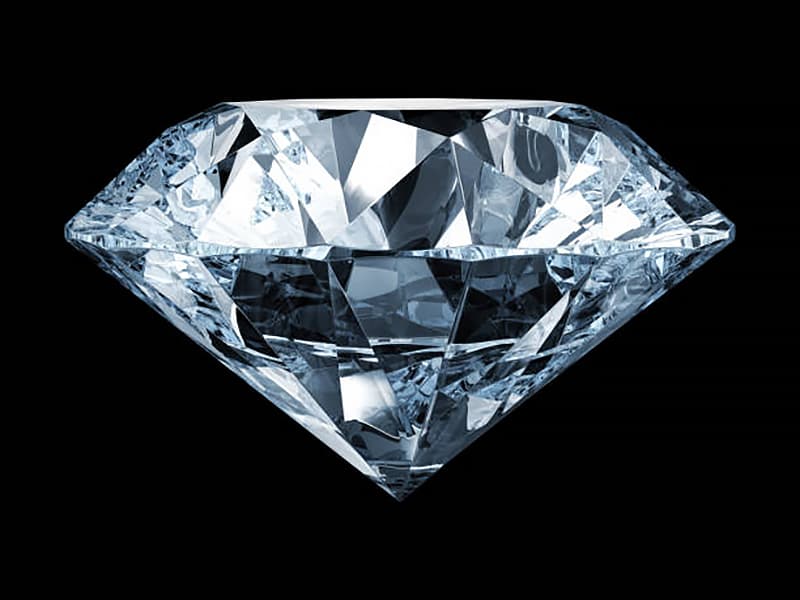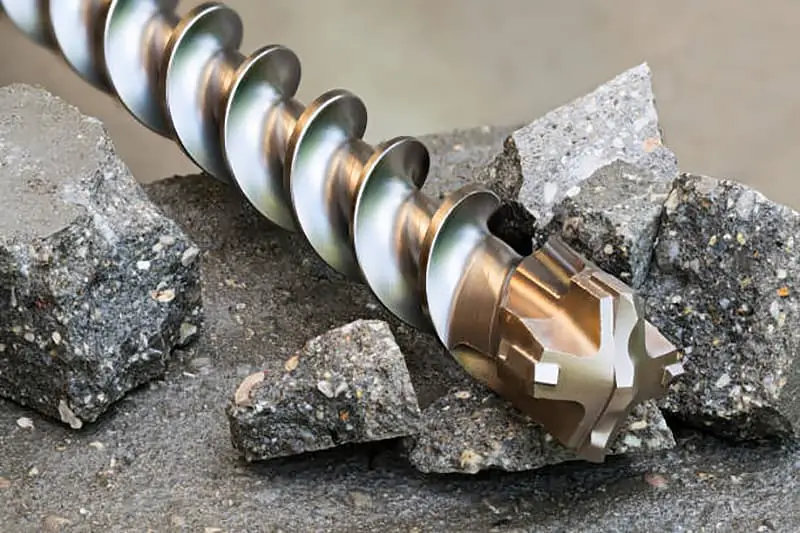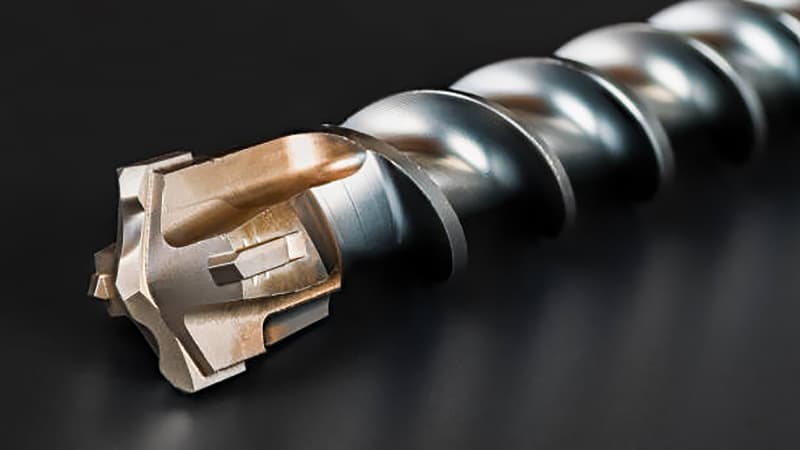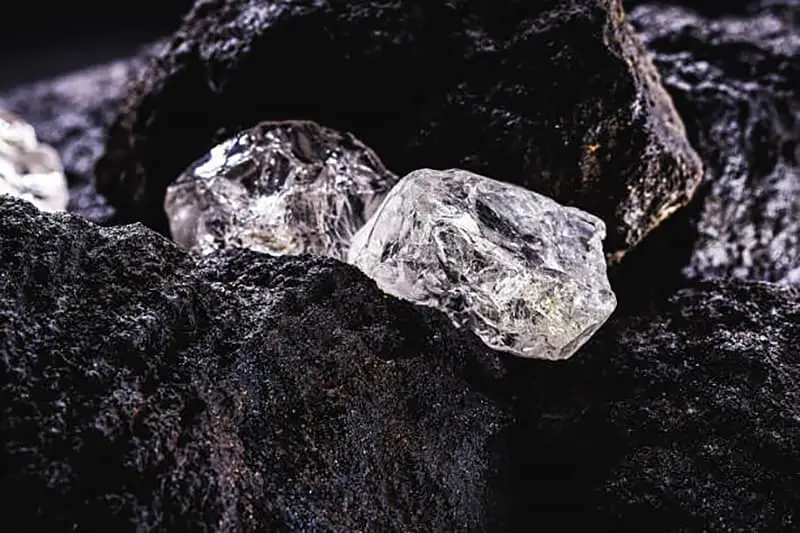Tungsten and diamond exhibit significant differences in hardness, durability, and appearance. Diamond, a pure carbon allotrope, is the hardest known material, ideal for jewelry and industrial cutting tools. Tungsten, however, known for its extreme durability and high melting point, is largely used in electrical applications and heavy-duty tools. It is less brilliant but more affordable than diamond.
Diamond, also referred to as “adamant”. It is a mineral composed of carbon elements and is an allotropic form of carbon.
Diamond is the hardest naturally occurring substance in nature. But when compared to carbides, which one has superior hardness? Let’s discuss which is harder, tungsten carbide or diamond.

Many people are aware that tungsten carbide is hard. Products processed using tungsten carbide greatly enhance their hardness, durability, and wear resistance.
Many people don’t have a strong concept of the hardness of different materials and only know that diamond is the hardest substance.
In fact, adamant is just another name for diamond, so tungsten carbide is certainly not as hard as adamant.
Although tungsten carbide is not as hard as diamond, its hardness is still quite exceptional.
Tungsten steel (hard alloy) has high hardness, wear resistance, good strength, and toughness, heat resistance, corrosion resistance, and a series of excellent properties, especially its high hardness and wear resistance, which remain virtually unchanged even at 500℃ and still maintain high hardness at 1000℃.
Tungsten carbide, with a Mohs hardness of about 9 to 9.5, is among the hardest substances. By comparison, the Mohs hardness of diamond is 10, with the hardness of diamond being the highest benchmark.
While tungsten carbide is not as hard as diamond, some of its other physical parameters are much better than diamond. For example, its stiffness can reach twice that of steel, with a Young’s modulus of about 530-700 GPa, which is also twice that of steel.
It is because of its high hardness and excellent other properties that tungsten carbide has found extensive applications in fields like aerospace, petroleum and natural gas, chemical engineering, fluid control, and heavy machinery.

Diamond also has a wide range of uses, such as in crafts, industrial cutting tools, and more. Graphite can form synthetic diamond under high temperature and high pressure.
Its industrial uses are also quite common, including geological and oil drilling diamonds, wire drawing diamond dies, abrasive diamonds, truing diamonds, glass knives with diamonds, hardness tester diamond indenter, craft diamonds, and so on.
Characteristics and Applications of Tungsten Carbide
Tungsten carbide is a product of powder metallurgy, created by sintering a compound of carbon and tungsten, which are both high in hardness and melting point, with binders such as cobalt (Co), molybdenum (Mo), and nickel (Ni).
Its hardness at room temperature can reach 78-82 HRC, and it can withstand high temperatures of 850-1000℃, with cutting speeds 4-10 times higher than high-speed steel.
However, its impact toughness and bending strength are significantly lower than those of high-speed steel, making it less likely to be used as a solid tool.
Pure tungsten carbide is not commonly used. It appears as a black hexagonal crystal with a metallic luster and a hardness close to that of diamond.
It conducts heat and electricity well, with a melting point of 2870℃ and a boiling point of 6000℃. It has a relative density of 15.63 at 18℃.
Tungsten carbide is insoluble in water, hydrochloric acid, and sulfuric acid, but dissolves easily in a mixture of nitric acid and hydrofluoric acid. When small amounts of metals such as titanium and cobalt are added to tungsten carbide, its brittleness decreases.
Tungsten carbide used for cutting steel often contains titanium carbide, tantalum carbide, or a mixture of both, to improve its explosion resistance. Tungsten carbide is chemically stable.
In tungsten carbide, the carbon atoms fill the gaps in the tungsten metal lattice without disrupting the metal’s original lattice, forming an interstitial compound.
Tungsten carbide is suitable for machining at high temperatures and can be used to make cutting tools, structural materials for furnaces, jet engines, gas turbines, nozzles, and more.

Tungsten vs Diamond: Which is harder?
Diamond is harder than tungsten.
Tungsten, being the hardest metal, comes second to diamond in hardness. The most significant feature of tungsten jewelry is its hardness, which is 10 times that of 10K gold, five times that of stainless steel, and four times that of titanium.
Tungsten, as an alloy, also known as tungsten steel, has an astonishing hardness and stability, slightly less than diamond. If crafted well, tungsten jewelry will have a unique luster.
Those who have worn tungsten jewelry know that the longer it is worn and the more it contacts the skin, it not only avoids oxidation but also becomes brighter. Even when scratched with a knife or exposed to strong acid, tungsten rings show no trace.
Tungsten Steel vs Diamond: Which is harder?
Diamond is harder than tungsten steel.
Tungsten steel, also known as carbide or tungsten titanium alloy, can reach a hardness of 89-95 HRA. Because of this, tungsten steel products (usually tungsten steel watches) are resistant to wear, hard, and resistant to annealing, but are brittle.
The primary components of hard alloys are tungsten carbide and cobalt, which make up 99% of the total composition, with the remaining 1% being other metals, hence it’s also called tungsten steel.
Diamond is the hardest substance in nature, with an absolute hardness of 10000-2500. It has a wide range of uses, such as crafts and industrial cutting tools.
Graphite can form synthetic diamonds under high temperature and pressure, and it’s also a valuable gem.
Diamond is a crystalline element made of carbon, formed under high pressure and high temperature in the deep earth. It refers to polished diamonds. A diamond is a colorless octahedral crystal made of pure carbon. It is composed of carbon atoms connected by four-valence bonds, and it is the hardest substance known to exist in nature.
Because the C-C bonds in diamonds are very strong, and all valence electrons participate in the formation of covalent bonds, there are no free electrons, making diamonds very hard. The melting point is 6900 degrees Fahrenheit, the ignition point is 720-800 in pure oxygen, and 850-1000 in air, and they do not conduct electricity.
Diamond Production Distribution

Diamonds are produced all over the world, and more than 30 countries have diamond resources, with an annual production of about 100 million carats. The top five countries in terms of production are Australia, the Democratic Republic of the Congo, Botswana, Russia, and South Africa.
These five countries account for about 90% of the world’s diamond production. Other diamond-producing countries include the Democratic Republic of the Congo, Brazil, Guyana, Venezuela, Angola, the Central African Republic, Ghana, Guinea, Ivory Coast, Liberia, Namibia, Sierra Leone, Tanzania, Zimbabwe, Indonesia, India, China, Canada, and others.
The world’s major diamond cutting centers are Antwerp in Belgium, Tel Aviv in Israel, New York in the United States, Mumbai in India, and Bangkok in Thailand. Antwerp is known as the “Diamond Capital of the World,” with about half of the world’s diamond transactions completed here. The “Antwerp Cut” is synonymous with perfect cutting.


